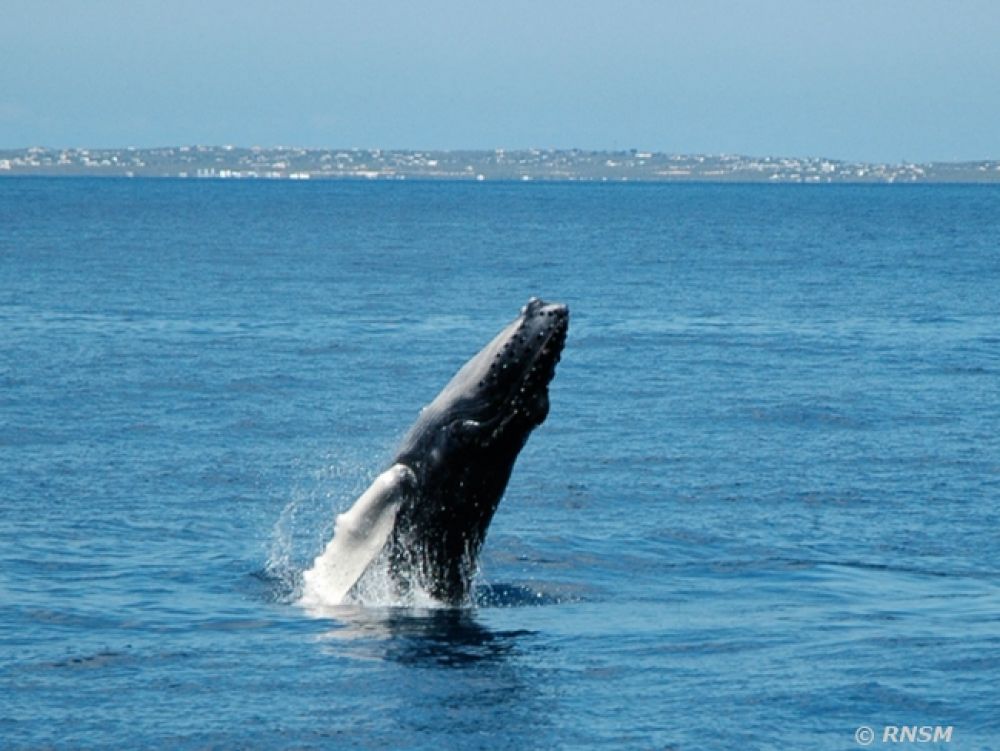The whale season has begun
The whale watching season has begun. "The males are already in our waters. About two weeks ago, several diving clubs from both sides of the island heard them singing," reports Julien Chalifour, Head of the Scientific Monitoring and Tasks Department.
The plateau formed by the islands of Saint-Martin, Anguilla, and Saint-Barthélemy is a mating area for humpback whales. The males arrive first and scout the location to mark their territory. They await the arrival of the females to go on parade. They have to sing as loudly as possible to attract them. "Each one of them has his own melody, continues the scientist, but there are also styles that change over the years. They do not all come from the same geographic areas, and first, have to harmonize between themselves. While still distinguishing themselves from the others, they sing together in something like a chorus."
Once the females arrive, they will jump up to five meters in the air and hit the water with their large pectoral fins to make noise and get noticed. If several males are interested in the same female, they will make a group around her. The most physically impressive, and also those who remain the longest - who have the most endurance - will win their prize.
Where can you watch them?
Starting at a depth of 10 meters, you have a chance to observe humpback whales that are an average of 15 meters long. For sperm whales, you need deeper waters; you generally find them around Saba and St. Eustache as well as around Saint-Martin and Saint-Barthélemy.
It is ideal to observe these cetaceans in the water. Those who don’t own their own boat can hire the services of another provider. You must simply ensure that they have been adequately trained in approach techniques and respect for marine life.
For those with their own boat, the Nature Reserve recommends never cutting off the route of a marine mammal, approaching them gradually from behind, turning off the engines if they come towards you, and if you find yourself moving alongside them, it is better to sail between them and the land in order to limit the risk of beaching. Finally, it is clearly best not to follow them for hours at a time in order to avoid harassing them and to lower your music as sound travels more rapidly in water than in air.
You can also observe them from the coast, particularly from an elevated viewpoint over the channel between Saint-Martin, Saint-Barth, and Anguilla, such as Lucas Bay.
The bottlenose dolphin is another one of the primary species to frequent our waters. But its behavior and habits are still little known in the North Islands.
Photo credits: Saint-Martin Nature Reserve (earth observation)








